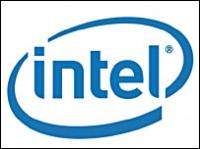Intel Outlines Latest vPro Platform

Intel, which is now gearing up to revamp the vPro platform, officially launched its business desktop platform in April and the technology began to ship to OEMs in September.
Intel is gearing up to launch the newest platform for its vPro technology.
The world's largest maker of processors is preparing to launch its new vPro platform, which the company has dubbed "Weybridge," by the second half of this year. This updated platform will still be based on Intel's Core 2 Duo processor but it will also include a new chip set and gigabit networking, as well as updated security and management features.
The Santa Clara, Calif., company launched its vPro brand in April, and the original business desktop chip management platform began shipping to OEMs in September.
vPro is Intel's attempt to provide customers and IT professionals with enhanced manageability, better security and a more energy efficient platform, said Mike Ferron-Jones, the director of digital office platform marketing at Intel.
With the original vPro platform, Intel officials said the technology would allow easier remote management of desktops, promote closer ties to the manufacturers of management software and increase security. These features revolved around the company's AMT (Active Management Technology) and its use of virtualization.
AMT allowed Intel to provide a hardware and software management engine that allows a number of "on-board" capabilities, such as monitoring both a PC's hardware and software configuration to give a holistic view of the system.
Since launching the first vPro platform last year, Intel said nearly all the major OEMs, including Hewlett-Packard, Gateway, Acer and Lenovo are offering vPro in some desktops. The only large OEM not offering vPro in a PC is Dell, although an additional vPro announcement is expected within a few weeks.
With the new platform, Intel offers slightly different Core 2 Duo model numbers to go with the new platform.
The updated platform will also include Intel's latest chip set, the Q35 Express, along with the company's 82566DM gigabit network interface connector.
In addition, Intel will roll out the third generation of AMT. This latest version of AMT will embed basic filtering technology into the firmware of the silicon itself. Although vPro technology allows for third-party software, this layer of security will now be included within the platform itself.
"With Weybridge, the basic filtering technology is right within the firmware," Ferron-Jones said. "The platform is now equipped with rudimentary filtering, whether there is third-party software of not. The user now does not have to have extra software to take advantage of this filtering technology."
Ferron-Jones said this filter technology will help protect the PC from common security concerns, such as worms, as well as offer a level of protection to the machine both before and after the actual third-party software security is activated. The technology also alerts the IT administration of the problems and can isolate a single machine from the network.
Intel will also include what the company calls its TXT (Trusted Execution Technology) in the new platform. Ferron-Jones explained that TXT is the final realization of the company's "LaGrande Technology," which has been talked about for several years.
The TXT tool works with TPMs (Trusted Platform Module 1.2) and basically perform three functions with the vPro platform. First, TXT allows new software to be booted into a known, trusted state.
With the help of virtualization, TXT can also isolate applications within a memory partition and isolate the application with the hardware. This means that no additional hardware or software can access that application.
Finally, once an application is removed, TXT ensures that all data and information is purged from the system.
The new vPro platform will also support new management standards, including new guidelines from the Desktop Mobile Working Group, which creates management standards for laptops and desktops, and Web Services Management, which provides guidance for the management of standards based on Web-services architecture.
(Intel is either the primary author or co-sponsor of the new management standards for both groups.)
Ferron-Jones said Intel will continue to up the vPro platform each year. The new platform standards found in Weybridge will likely appear by the second half of 2007. Intel will also include some features found in the original vPro platform when the company launches its new "Santa Rosa" platform for laptops later this year.
Roger Kay, the president of Endpoint Technologies Associates, said Intel has taken an incremental step in improving vPro, but these steps were critical to the success of the platform.
"It's an incremental improvement, but I think that small improvements have made vPro a lot more useful than before," Kay said. "I think adding the trusted platform module is a big step for them and the standards they are incorporating are also important."
Kay also thought that Intel had made the smart move by sticking with TMP 1.2 standards instead of trying to invent its own security standards.
As for the future, Intel officials have said that vPro is the company's fastest ramping platform to date. Kay believes that vPro will continue to find a niche with large enterprise customers, as well as government agencies, but it could also find its way to medium-size businesses.
"With vPro, the more clients that a business has, the more valuable it is," Kay said.
Copyright 2007 by Ziff Davis Media, Distributed by United Press International





















